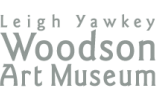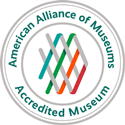I enjoy seeing young people get creative . . . I’d be an awful Woodson Art Museum educator if I didn’t.
Some hours at the Museum are spent in the office slicing and dicing the inbox, some (ahem, many hours during Birds in Art planning) are spent in meetings with coworkers or colleagues, and some hours are spent working with visitors in the galleries or Museum classroom. Public programs from Art Babies to Art 101, visiting school groups, or guest artist workshops each demand a different energy and method of engagement. The diversity of these audiences and singular challenges and rewards they each offer is part of what makes my job at the Woodson so exciting. (Clearly I live life in the proverbial fast lane, when I admit I get my twenty-something thrills from my work with Museum visitors.)
The last two weeks were filled with excitement.
My summer felt like it finally began once photographer Linda Rutenberg arrived in Wausau for her weeklong residency, which included two, two-day photography camps – for 9-11 year olds and 12-14 year olds – followed by a nighttime photography workshop in the Museum’s sculpture garden for adults.
The photography camp participants were…FEARLESS!
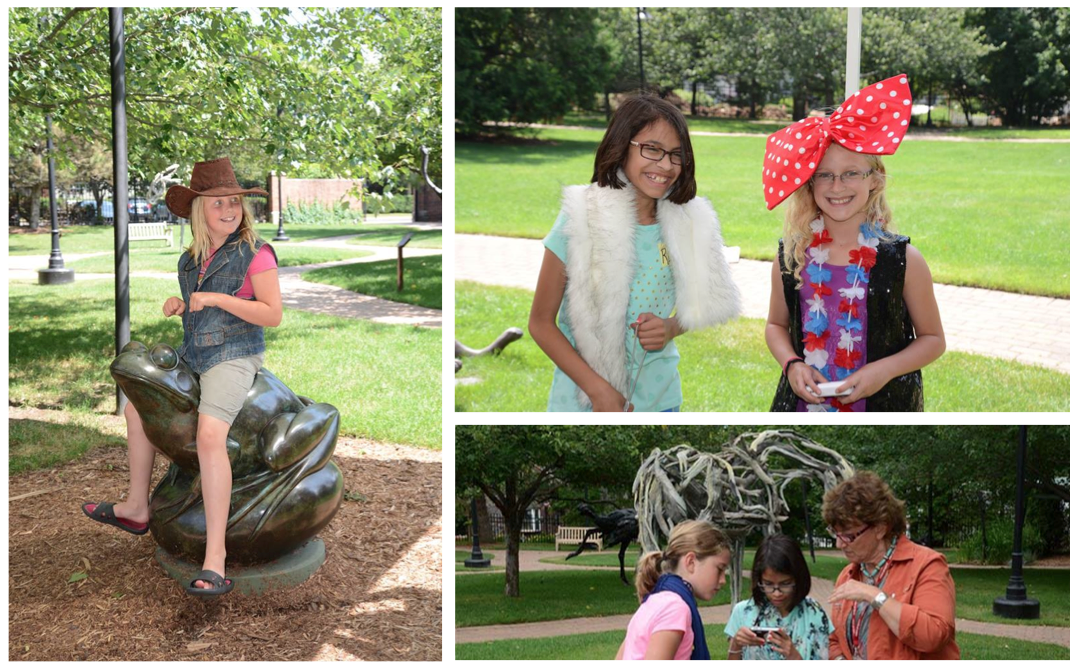 Dress up in crazy costumes and ham it up in the sculpture garden for a portrait photo shoot? No problem! The results were original, enthusiastic, and, above all else, creative.
Dress up in crazy costumes and ham it up in the sculpture garden for a portrait photo shoot? No problem! The results were original, enthusiastic, and, above all else, creative.
I observed the trials and errors of photography unfold during the art camps, in between trips from the lower-level classroom to the sculpture garden tents with cartloads of water bottles, snacks, and art supplies. “Photo out of focus? Delete it and try again!” was the attitude of the budding photographers. Nighttime photography workshop participants, however, had a different set of challenges.
Inspired by Linda’s Garden at Night exhibition, area photographers had an extra cup of coffee and joined her at the Museum for an 8pm-Midnight crash course in low-tech nighttime photography. Working in pairs, participants carefully walked the gardens scouting out flowers and sculptures to photograph – one person poised at the tripod, the other, standing out of the frame, moving the dim beam of light across the subject. “Painting the light,” as Linda Rutenberg calls it, requires a pitch-black landscape, a still subject – the summer breeze did not make us feel fine – a long exposure, and a non-LED flashlight. This formula sounds simple; it’s not. The trials and errors here were complex and required patience and careful collaboration.
I wandered the grounds and watched the yellow lights dance across the flowers and bronze menagerie, marveling at how familiar subjects are transformed by nightfall. After my second application of bug spray, I decided to give the technique a try, working with a participant named David who, like me, was especially interested in capturing Debra Butterfield’s Kua. We tried a half-dozen or so times before moving on to other works, and I ended the evening not thinking much of my clumsy efforts to “paint the light” for David. Last Friday, while I worked with another group of campers, David stopped by the Museum and dropped off a print from the workshop.
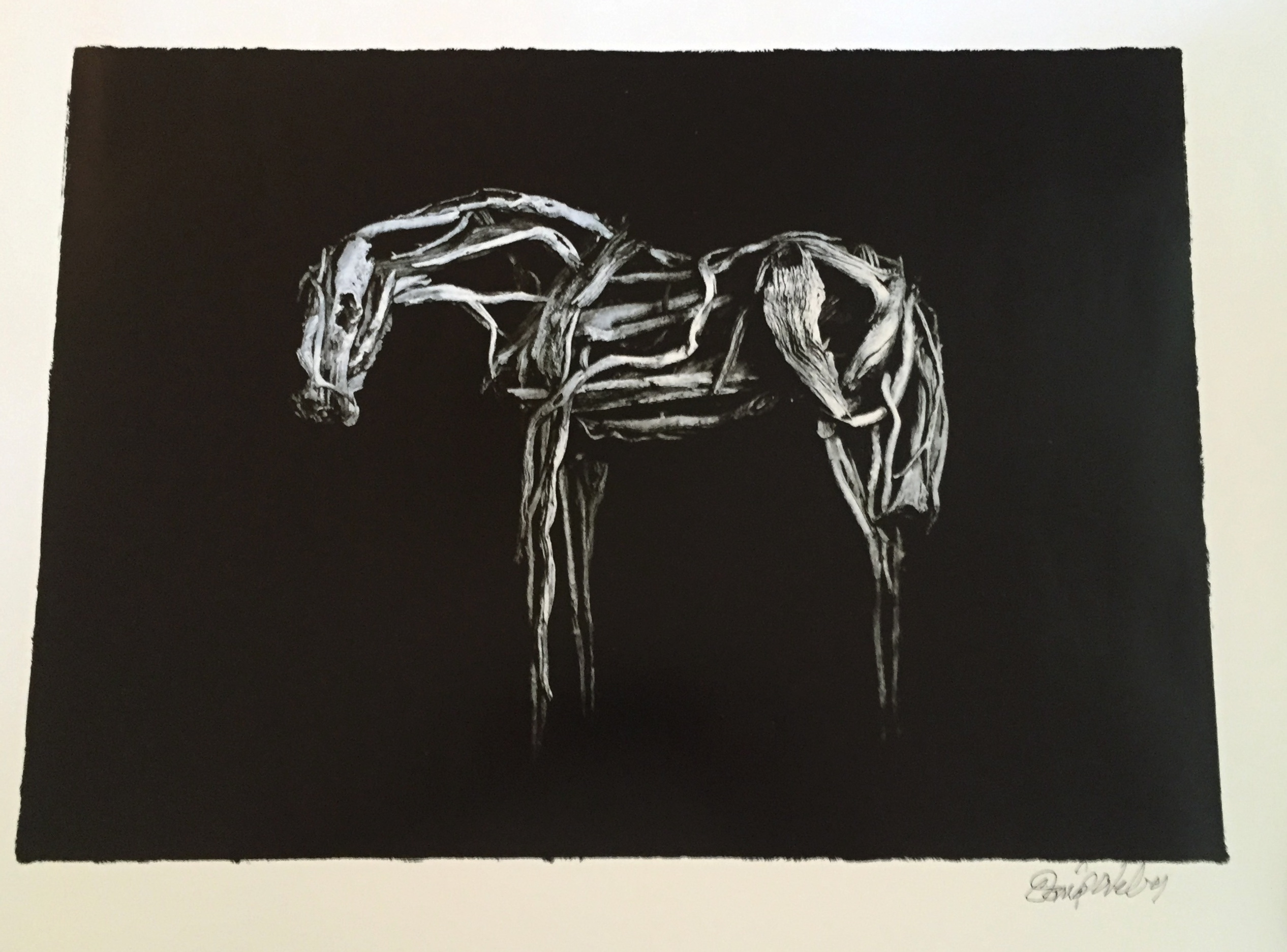 I was so surprised and delighted not only by my former collaborator’s generosity, but also by the quality of the image itself. Granted, David is a seasoned photographer; his work cropping and adjusting the image truly paid off. I look forward to framing and displaying this print, sure to prompt fond memories of the workshop and work with David.
I was so surprised and delighted not only by my former collaborator’s generosity, but also by the quality of the image itself. Granted, David is a seasoned photographer; his work cropping and adjusting the image truly paid off. I look forward to framing and displaying this print, sure to prompt fond memories of the workshop and work with David.
Behold the art of collaboration.
Artists don’t live and work in a bubble of their own creative energy. While artists do rely on their distinct vision and practice they also require the insights, inspiration, and assistance of others – just like the rest of us. Navigating a collaborative creative course isn’t always as easy as “let’s try this shot again with my flashlight.” Communicating, experimenting, and trusting others is central in all of our lives, but sometimes we need a reminder about how best to embark on a collaborative journey.
Enter Bird Ross.
Bird created Separately & Together with artist Paige Davis, for the Bartram’s Boxes Remix exhibition. On view at the Woodson, the work features a series of shelves lined with parcels, most wrapped in white linen, identified by tags marked with a letter of the alphabet and images of the boxes’ contents.
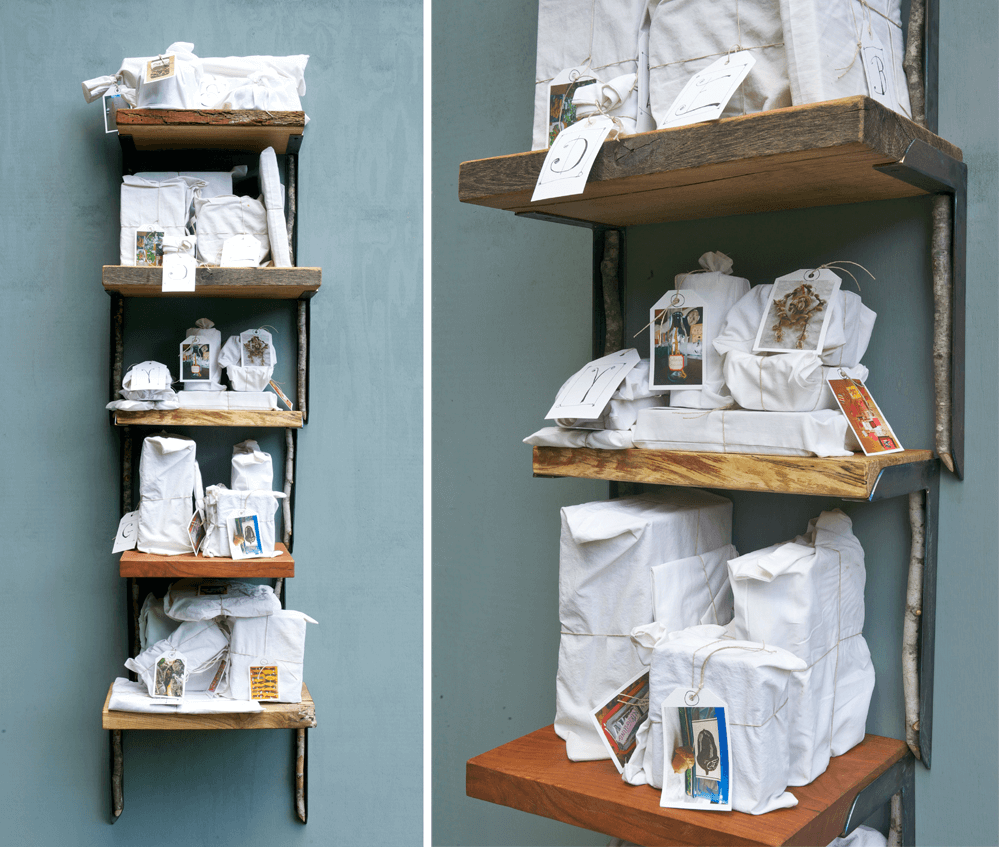 The boxes contain small art pieces, collected objects, and memorabilia corresponding to the letter of the alphabet assigned to the box. Twenty-six letters became twenty-six assignments in observation, creation, and correspondence; the two artists divided the alphabet, created and assembled items, and mailed boxes back and forth to each other throughout a year.
The boxes contain small art pieces, collected objects, and memorabilia corresponding to the letter of the alphabet assigned to the box. Twenty-six letters became twenty-six assignments in observation, creation, and correspondence; the two artists divided the alphabet, created and assembled items, and mailed boxes back and forth to each other throughout a year.
The resulting work is both accessible and mysterious. Viewers recognize the accouterments of the postal process, note the letters of the alphabet, and glimpse images of some of the contents within the bundles. The story unfolds before us, stacked neatly like so many boxes in our own lives. What’s most captivating, though, is the evidence of the artists’ practices. The ritual of mailing unknown treasures back and forth is becoming less familiar to many of us who don’t practice the “art of snail mail.” The artistic repository on view – part performance, part installation, and part mixed media – is the outcome of creative collaboration and communication.
Intrigued? I know I was.
Learn more about this collaborative project and how you can incorporate similar practices into your own creative endeavors during Bird Ross’ visit to the Woodson Art Museum in early August. An Art 101 program on Thursday, August 6, a free workshop on Friday, August 7, and a with the artist on Saturday, August 8, await.
I’ll see you there!
